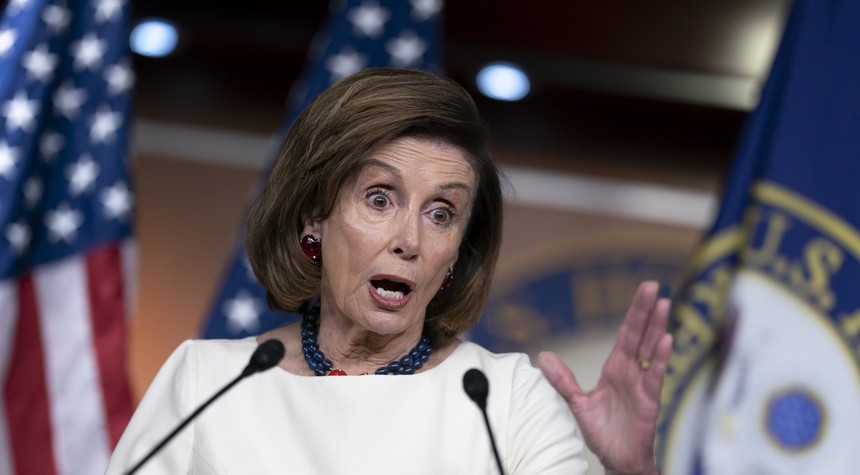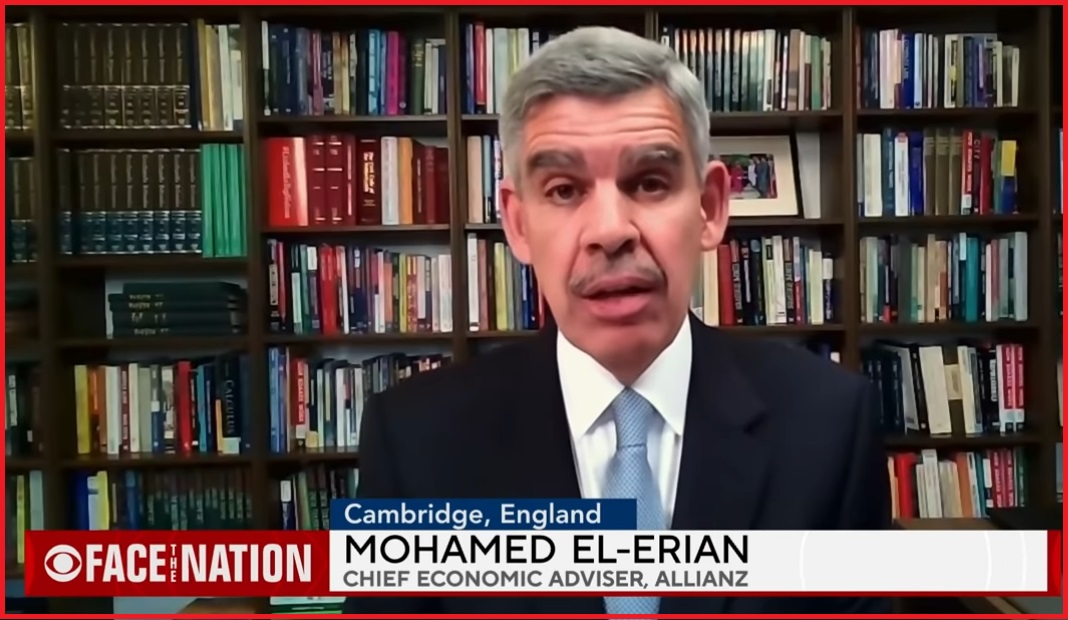This exclusive except from Matt Palumbo's forthcoming book shines more light on the backdrop of the attempts to use Ukraine to oust President Trump.
The Soros Circle: AntAC
In 2014, Soros’s International Renaissance Foundation (IRF) and its grantees were active supporters in the creation of the Anti-Corruption Action Centre (AntAC) of Ukraine, a powerful NGO. Through the end of 2018, 17 percent of AntAC’s funding was coming from Soros’s group.
AntAC is run by Daria Kaleniuk, an American-educated lawyer. White House logs show Kaleniuk visited on December 9, 2015, reportedly meeting with Eric Ciaramella, the CIA employee many suspect is the anonymous whistleblower that sparked Trump’s first impeachment, the source of which was a faultless phone call with Ukraine’s president.
AntAC was responsible for creating the National Anti-Corruption Bureau of Ukraine (NABU), a law enforcement group separate from the prosecutor general’s office that was tasked with handling the biggest corruption cases. It has investigatory powers but cannot indict suspects. Only when it passes its findings to prosecutors does a subject of its inquiry become part of a criminal case. The agency was established in 2014 at the behest of the International Monetary Fund (IMF) after its predecessor, the National Anti-Corruption Committee, was deemed a failure. Western governments funded NABU, which also enjoyed the backing of the FBI. Like all the Orwellian names of groups Soros had a part in, NABU acts independently in name only.
With the Obama DOJ’s launch of the Kleptocracy Asset Recovery Initiative, aimed at battling large-scale public corruption in foreign states, the State Department, DOJ, and FBI began outsourcing some of their own work to AntAC.
In February 2015, Viktor Shokin was appointed prosecutor general of Ukraine, and was soon scrutinized for helping the owner of the energy company Burisma. Shokin had helped owner Mykola Zlochevsky regain control of $23 million that was frozen by British authorities. Burisma was made famous by Hunter Biden’s involvement in the company, and Zlochevsky was the one who struck the deal to appoint Hunter to the company’s board of directors in 2014 at a reported salary of $83,333 per month.
AntAC’s stance on Shokin was made clear; it tweeted on December 2015 that “One of the major goals of #AntAC for 2016 is to force #Shokin to resign.”
Shokin attempted to begin a probe into Burisma that “included interrogations and other crime-investigation procedures into all members of the executive board, including Hunter Biden.”
This never materialized because Joe Biden (then Vice President) threatened to withhold a $1 billion loan to Ukraine unless Skokin was removed as prosecutor general. Biden even bragged about it on video to the Council on Foreign Relations in 2018, stating that when he attended a meeting with Ukraine’s president and prime minister, he said, “‘I’m leaving in six hours. If the prosecutor is not fired, you’re not getting the money.’ Well, son of a bitch. He got fired.”
Biden insisted the U.S. wanted Shokin removed over corruption concerns shared by the European Union. But in tapes released by Ukrainian lawmaker Andrii Derkach, Biden and Poroshenko reveal that the Ukrainian president admitted to doing Biden’s bidding. The quid pro quo is proven.
“Despite the fact that (Shokin) didn’t have any corruption charges, we don’t have any information about him doing something wrong, I especially asked him…to resign.”
In another recording from March 22, 2016, the two allegedly discussed who would be appointed prosecutor general of Ukraine, and then who would be their eventual replacement. Former prosecutor Yuriy Lutsenko was mentioned. The White House issued a press release confirming the pair talked again on this date.
At the end of the call, Biden said, “I’m a man of my word. And now that the new prosecutor general is in place, we’re ready to move forward to signing that new $1 billion loan guarantee.”
Derkach would later be punished for allegedly exposing Biden’s call with Poroshenko.
After the audio was made public, Poroshenko’s successor Volodymyr Zelensky called for an investigation into the recordings, and the U.S. Treasury Department sanctioned Derkach, describing the audio as “unsupported information” part of a campaign to “discredit U.S. officials.” They also accused Derkach, a member of Ukraine’s parliament, of being a “Russian agent.”
The sanctions came less than a year after Derkach met with Rudy Giuliani in Kiev, which reports at the time said was to discuss possible misuse of U.S. tax dollars by Ukraine’s government.
“I can’t think of anything [Derkach] gave me that you could consider meddling in the election. Indicting [Steve] Bannon is a lot more meddling in the election than this. My best recollection is it was all information we had already. I know I kind of got bored during the deposition because I had already heard it.”
– Rudy Giuliani
“I can’t see how you can be accused of meddling in an election that is more than a year away,” Giuliani continued. “The only new piece of information he gave… is the report that $5.3 billion in foreign aid [to Ukraine] is unaccounted for, $3 billion of which is American money and a big portion of that went to nongovernmental organizations controlled by George Soros,” he continued.
As the 2016 presidential race began to intensify, Ukraine’s prosecutor general’s office began an investigation into AntAC about the alleged misuse of $2.2 million of funds. An inquiry was sent to former U.S. ambassador Geoffrey Pyatt. George Kent, the second-in-command at the embassy, responded to Deputy Prosecutor General Yuriy Stolyarchuk with a two-page letter stating that the U.S. had “no concerns about the use of our assistance funds.”
Kent pressured Stolyarchuk about AntAC in the letter, writing: “The investigation into the Anti-Corruption Action Center, based on the assistance they have received from us, is similarly misplaced.” That was written on April 4, 2016—less than a week after Shokin was removed.
A few months later, Yuriy Lutsenko was named prosecutor general and met with U.S. Ambassador to Ukraine Marie Yovanovitch. Lutsenko recalls being stunned when the ambassador gave him a list of people who shouldn’t be prosecuted. The list included a founder of AntAC, and two members of Ukrainian Parliament who supported AntAC’s anticorruption agenda (while benefitting from corruption themselves).
As John Solomon puts it, the implied message to Lutsenko was clear: “Don’t target AntAC in the middle of an American presidential election in which Soros was backing Hillary Clinton to succeed another Soros favorite, Barack Obama.”
So what was motivating George Kent and Ambassador Yovanovitch to influence investigations in Ukraine of all places?
The fact that Ukraine dealt with an organization created with the backing of the Obama administration, State Department, FBI, and George Soros. An investigation into AntAC could expose a whole chest of secrets—the least of which being that they’re not all concerned with corruption like they claim.
Memos uncovered by John Solomon from Soros’s Open Society Foundations before the 2016 election make that obvious. One advocates U.S. involvement in Ukraine and offers “behind the scenes advice and support to Ukrainian partner AntAC’s efforts to generate corruption litigation in Europe and the U.S. respecting state assets stolen by senior Ukrainian leaders.”
Another memo describes AntAC’s strategy of developing friendships in key government agencies to leverage within the countries Soros operates in.
“We have broadly recognized the importance of developing supportive constituencies in order to make headway in tightening the global web of anti-corruption accountability. We first conceived of this in terms of fostering and helping to build a political environment favorable to high-level anti-corruption cases.”
One such contact was Karen Greenaway, an FBI supervisor who was one of the lead agents in investigating Paul Manafort in Ukraine. She’s appeared at Soros-sponsored events and conferences before and joined AntAC’s supervisory board after retiring from the FBI. The FBI also separately confirmed her contacts with AntAC before she joined them, saying they were part of her “investigative work.”
One memo reportedly had a chart of Ukrainians that should be investigated, including people with ties to Paul Manafort.
While not mentioned by name, one of those mentioned is likely Dmitro Firtash, a Ukrainian billionaire with competing energy interests in Europe as Soros. Firtash previously beat civil charges alleging he had engaged in money laundering with Manafort.
All of this pressure on Ukrainian prosecutors was happening in the spring of 2016 as Manafort joined the Trump campaign.
At this time, Fusion GPS was just starting to conduct opposition research on Trump, and the DNC’s Ukraine expert Alexandra Chalupa was searching for dirt on Manafort. Meanwhile, Soros-funded AntAC was looking to probe Manafort’s Ukraine associates, and the U.S. embassy was trying to stop any and all inquiries that risk derailing AntAC’s work. With AntAC having the potential to “uncover” more dirt on the prime contender to Hillary Clinton, the motivations become obvious.
Prosecutor General Lutsenko himself suggested that the embassy applied pressure because it didn’t want Americans to see who was being funded with our tax dollars. “At the time, Ms. Ambassador thought our interviews of the Ukrainian citizens, of the Ukrainian civil servants who were frequent visitors in the U.S. Embassy, could cast a shadow on that anti-corruption policy.”
Another Soros-funded group targeted Firtash in 2018.
The Open Society-backed Campaign Legal Center filed a complaint with the FEC alleging that Ukrainian businessman Igor Fruman and Russian-born businessman Lev Parnas created a shell company called Global Energy Producers, LLC to anonymously donate $325k to a pro-Trump super PAC. The investigation that followed uncovered a $1 million payment to Parnas’s wife from Firtash’s lawyer.
The hunt for any information that could possibly damage President Trump or anyone connected to him was now on.













